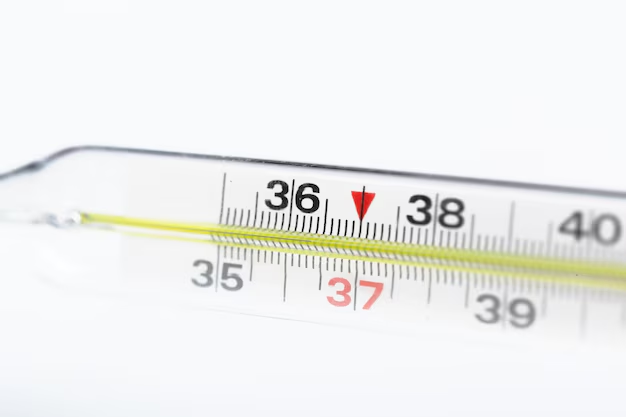Is 45 Degrees Cold Enough for a Refrigerator? Let's Dive Into Temperature Settings!
In our busy lives, we often take for granted that our refrigerators work tirelessly to keep our food fresh and safe. But have you ever stopped to wonder what temperature is optimal for your fridge? More specifically, is 45 degrees Fahrenheit cold enough to ensure your food is preserved properly? Let's delve into this intriguing topic as we explore ideal refrigerator temperatures, practical advice for setting your fridge, and much more.
Understanding the Ideal Refrigerator Temperature
What Temperature Should a Refrigerator Be?
The ideal refrigerator temperature is a common question among many, and the National Institute of Standards and Technology offers some guidance. For most household refrigerators, the recommended temperature is between 35 and 38 degrees Fahrenheit. This range ensures that your food stays fresh without freezing. But why this specific range?
- Safety and Freshness: Keeping foods below 40 degrees Fahrenheit helps slow down the growth of bacteria and mold, which can lead to food spoilage or foodborne illnesses.
- Energy Efficiency: Setting your fridge within this range also keeps energy consumption reasonably low, preventing excessive usage while maintaining optimal cooling.
Why Not Lower or Higher?
Setting your fridge higher than this recommended range—say, at 45 degrees—can increase the risk of bacteria growth, potentially leading to spoiled food. On the other hand, setting it too low can cause items, especially those located near the back, to freeze—unpleasantly altering their texture and taste.
Exploring 45 Degrees: Is It Cold Enough?
Effects of 45 Degrees on Food Safety
At 45 degrees, the refrigerator temperature is above the recommended range, which may allow bacteria to multiply more rapidly. Foods like dairy, meat, and leftovers, which are especially prone to bacterial growth, could spoil faster at this temperature. While it might seem marginal, those extra degrees can make a significant difference over time.
- Dairy Products: Milk and other dairy can develop off-flavors and spoil faster.
- Meat and Poultry: These can become unsafe to consume more quickly if not stored within the recommended temperature range.
- Leftovers: To prevent the growth of pathogens, leftovers should be stored at 40 degrees or below.
Practical Implications for Energy Use
Running your refrigerator at 45 degrees might save energy, but the trade-off involves food safety risks, as well as a potential increased frequency of restocking due to spoilage—negating any energy cost savings with increased food expenses.
How to Check Your Refrigerator Temperature
To ensure your refrigerator stays at the ideal temperature, here are some practical tips:
- Use a Thermometer: Place an appliance thermometer in a glass of water in the center of your fridge. This can provide an accurate reading of the internal air temperature.
- Check Manufacturer Settings: If available, consult the fridge’s manual for expert recommendations regarding optimal settings for your specific model.
- Regular Monitoring: Periodically check the temperature to make necessary adjustments, especially when seasons change or if your fridge seems warmer or cooler than usual.
Steps to Maintain Optimal Refrigerator Conditions
Ensuring your fridge maintains the right temperature involves more than just setting a dial. Here are a few steps to consider:
Organize Your Fridge Properly
- Avoid Overloading: While it may be tempting to fill every nook and cranny with groceries, overloading can block vents and prevent cool air from circulating properly, affecting temperature control.
- Proper Placement: Place the items that are most sensitive to temperature changes, such as dairy or meats, on the shelves where cold air is more consistent.
Clean and Maintain Your Fridge
- Regular Cleaning: Dust the coils (usually located at the back or underneath) and ensure seals around the door are intact to enhance efficiency.
- Regular Defrosting: If you have an older fridge without automatic defrost, make sure you're eliminating ice buildup that might interfere with airflow and temperature regulation.
Energy Conservation Tips
- Keep the Door Closed: Open the fridge only when necessary to maintain the internal temperature and avoid warm air entry.
- Cool Foods Before Storing: Allow hot foods to cool to room temperature before placing them in the fridge. This helps prevent undue strain on the refrigerator's cooling system.
Summary of Key Takeaways
Here is a quick checklist to keep your fridge working optimally, saving both your energy costs and food safety concerns:
🧊 Refrigerator Temperature Tips:
- 🛑 Aim for 35-38°F: Keep your fridge between 35 and 38 degrees Fahrenheit for best results.
- 📈 Avoid 45°F: Temperatures of 45 degrees or higher can compromise food safety.
- 🧪 Use a Thermometer: A reliable way to monitor your fridge's temperature.
- ♻️ Efficient Use: Load sensibly and allow air to circulate.
💡 Maintenance Tips:
- 🧼 Clean Regularly: Keep coils dust-free and check seals.
- 🔄 Adjust Seasonally: Monitor and adjust with temperature changes.
Weighing Your Options
While 45 degrees might seem like a convenient way to economize on energy consumption, sacrificing food safety and quality is a considerable trade-off. For long-term food preservation and peace of mind, staying within the recommended fridge range ensures your cool storage is both effective and efficient. Regular maintenance and strategic organization can help keep your refrigerator running smoothly, reducing waste and optimizing performance. Take a moment today to check your fridge and make sure it's set to keep your cool goods safe and fresh!
